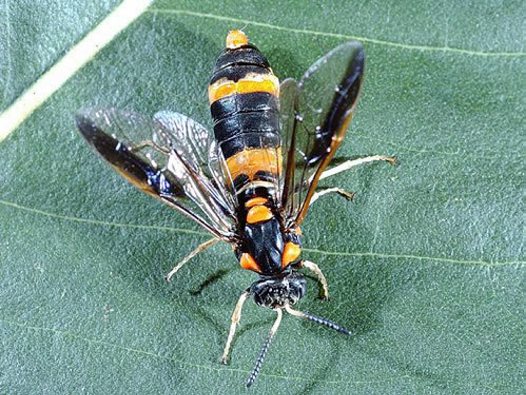The intensification of agriculture could have an impact on threatened populations of farmland birds due to its effect on one of their most important food sources, the sawfly. In the first genetic study of farmland sawflies in the UK, scientists at the James Hutton Institute in Dundee examined the genetic diversity and population structure of sawfly larvae at a number of sites in Scotland in order to gain a better insight into agriculture’s impact on sawfly abundance. Their study provided the first evidence for the presence of diploid males in UK farmland sawfly populations. Diploid males are usually sterile and are typically produced when an unusual form of sex determination, called complementary sex determination, operates in inbreeding populations. Their study suggests that farmland sawflies might be vulnerable to population decline due to low levels of genetic diversity and inbreeding.
An accelerated decline in farmland sawfly numbers arising from low diversity and inbreeding would have a significant impact on farmland bird species, such as the grey partridge. The grey partridge is important as it is seen as a useful indicator of biodiversity in the agricultural landscape and its decline can indicate wider changes in the diversity and abundance of plants, insects and other animals.
Long-term studies of grey partridge have shown that when its population declines, it directly correlates with reductions in invertebrates which are an important food source for chick survival.
Dr Nicola Cook, who led the study said: “This is the first time such genetic research has been carried out on any farmland sawfly population as most previous studies were limited to census-based counting. This genetic study has helped us identify populations which may be vulnerable due to low genetic diversity and potentially sterile males. These populations have come under threat due to intensification of agriculture and modern practices. It is therefore important that we farm in such a way that biodiversity is encouraged by providing field margins and wildlife corridors and using agri-chemicals responsibly.”
Professor Nick Sotherton, of the Game and Wildlife Conservation Trust who were the CASE partners on the study added: “Sawflies are an interesting group of insects closely related to ants and bees. Some are pests but they have also been shown to be important food items in the diet of farmland birds, many of which are now causing conservation concern. We know that sawflies are very susceptible to intensive farming practices and once numbers have been reduced, it can take many years for populations to recover. This research throws an interesting light on the fate of these beneficial insects when they reach low densities.”
The study was conducted as part of Dr Cook’s PhD which was supervised by Drs Alison Karley and Joanne Russell, James Hutton Institute, Professor Stephen Hubbard, University of St Andrews and Dr Dave Parish, Game and Wildlife Conservation Trust. Since gaining her PhD Dr Cook has taken up a position at the University of St Andrews.
Source: Cook, N., Hubbard, S.F., Karley, A.J., Russell, J.R. 2013. Genetic diversity and complementary sex determination (CSD) in Dolerus aeneus (Hymenoptera, Symphyta): implications for the conservation of an ecologically-important sawfly. Conservation Genetics. doi:10.1007/s10592-013-0500-0.
http://www.hutton.ac.uk/news/sawfly-decline-could-impact-bird-numbers

- Log in to post comments
